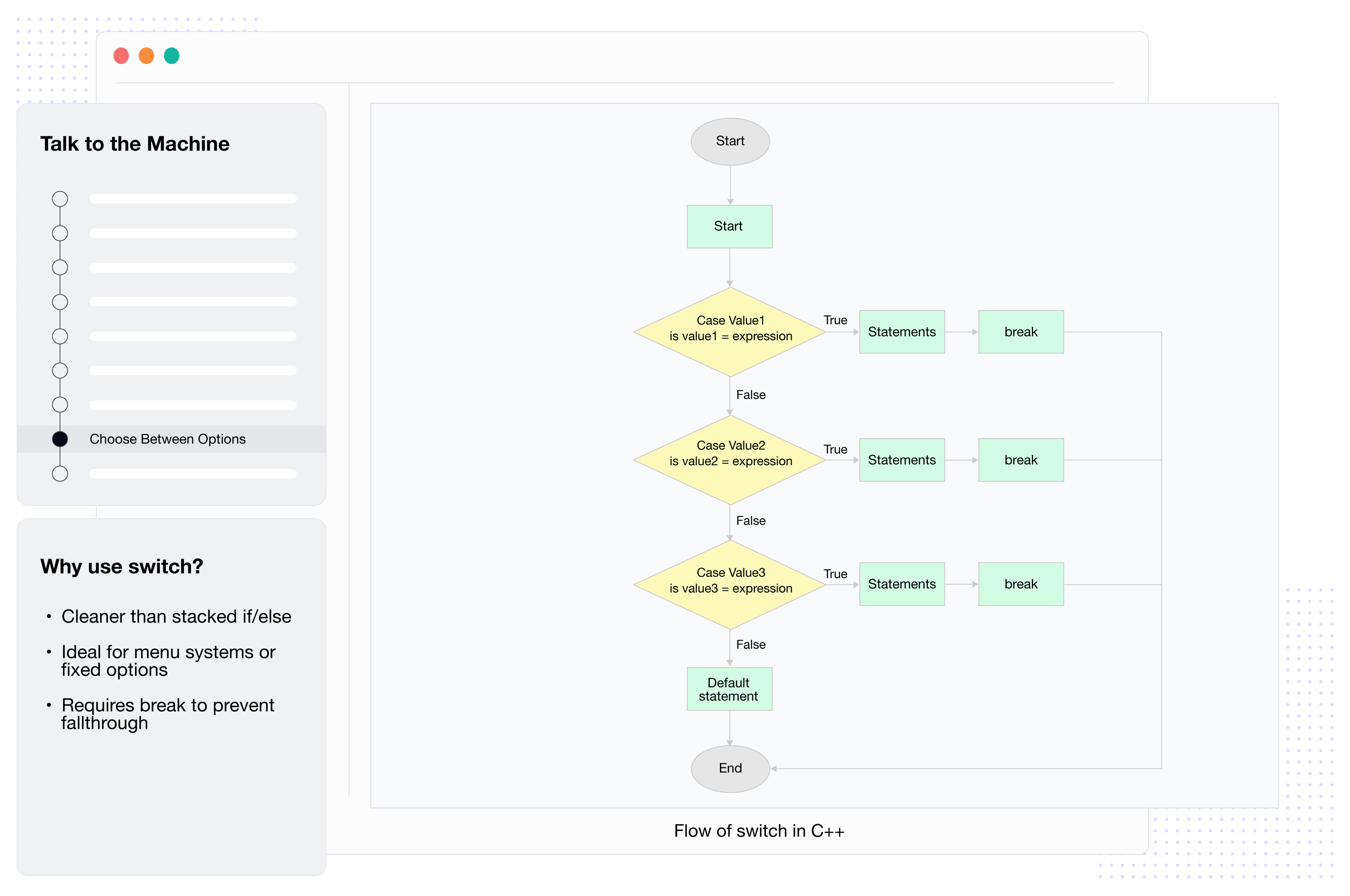This beginner-friendly course teaches C++ through a practical, hands-on approach. You’ll begin by learning how to communicate with the machine through input/output, simple calculations, and variables. Then, you’ll build programs to make decisions and repeat actions using conditionals and loops.
As you progress, you’ll learn how to organize your code using functions, store data with arrays and vectors, and apply your knowledge by building mini projects like a number guessing game and a contact book. These exercises are designed to help you build confidence and reinforce your understanding.
In the final section, you’ll build a complete project that combines all your skills in a creative, interactive program. Whether starting a tech career or just curious about coding, this course will give you a solid foundation in procedural C++ programming.
This beginner-friendly course teaches C++ through a practical, hands-on approach. You’ll begin by learning how to communicate wi...Show More
WHAT YOU'LL LEARN
An understanding of procedural C++ programming
Working knowledge of solving computational problems using logical thinking and code
Hands-on experience building your first project using C++
The ability to debug C++ code, build mini projects, and write interactive programs
Familiarity with real-world simulations
An understanding of procedural C++ programming
Show more
Content
1.
Talk to the Machine
20 Lessons
Get a feel for writing code and seeing output.
Say “Hello!”Quiz: Say “Hello!”Project: Print More GreetingsSolution: Print More GreetingsDo Some MathQuiz: Do Some MathProject: Quick CalculationsSolution: Quick CalculationsRemember ValuesQuiz: Remember ValuesProject: Personal ProfileSolution: Personal ProfileWork with the TextQuiz: Work with the TextProject: Favorite Color MessageSolution: Favorite Color MessageAsk the UserQuiz: Ask the UserProject: Favorite Number MessageSolution: Favorite Number Message
2.
Teach It to Think
21 Lessons
Use logic, conditionals, and repetition.
Make DecisionsQuiz: Make DecisionsProject: Number-Based ResponseSolution: Number-Based ResponseChoose Between OptionsQuiz: Choose Between OptionsProject: Day of the WeekSolution: Day of the WeekTry, Fail, and FixQuiz: Try, Fail, and FixProject: Fix the ErrorsSolution: Fix the ErrorsRepeat YourselfQuiz: Repeat YourselfProject: Loop It UpSolution: Loop It UpBuild a Number Guessing GameProject: Add Guess FeedbackSolution: Add Guess FeedbackProject: Workout Volume TrackerSolution: Workout Volume Tracker
3.
Give It a Memory
22 Lessons
Use functions and collections to build smarter code.
4.
Simulate the World
17 Lessons
Use C++ to build working, creative, and interactive programs.
Certificate of Completion
Showcase your accomplishment by sharing your certificate of completion.
Complete more lessons to unlock your certificate
Trusted by 2.9 million developers working at companies
"These are high-quality courses. Trust me the price is worth it for the content quality. Educative came at the right time in my career. I'm understanding topics better than with any book or online video tutorial I've done. Truly made for developers. Thanks"
Anthony Walker
@_webarchitect_
"Just finished my first full #ML course: Machine learning for Software Engineers from Educative, Inc. ... Highly recommend!"
Evan Dunbar
ML Engineer
"You guys are the gold standard of crash-courses... Narrow enough that it doesn't need years of study or a full blown book to get the gist, but broad enough that an afternoon of Googling doesn't cut it."
Software Developer
Carlos Matias La Borde
"I spend my days and nights on Educative. It is indispensable. It is such a unique and reader-friendly site"
Souvik Kundu
Front-end Developer
"Your courses are simply awesome, the depth they go into and the breadth of coverage is so good that I don't have to refer to 10 different websites looking for interview topics and content."
Vinay Krishnaiah
Software Developer
Hands-on Learning Powered by AI
See how Educative uses AI to make your learning more immersive than ever before.
AI Prompt
Code Feedback
Explain with AI
AI Code Mentor
Free Resources
